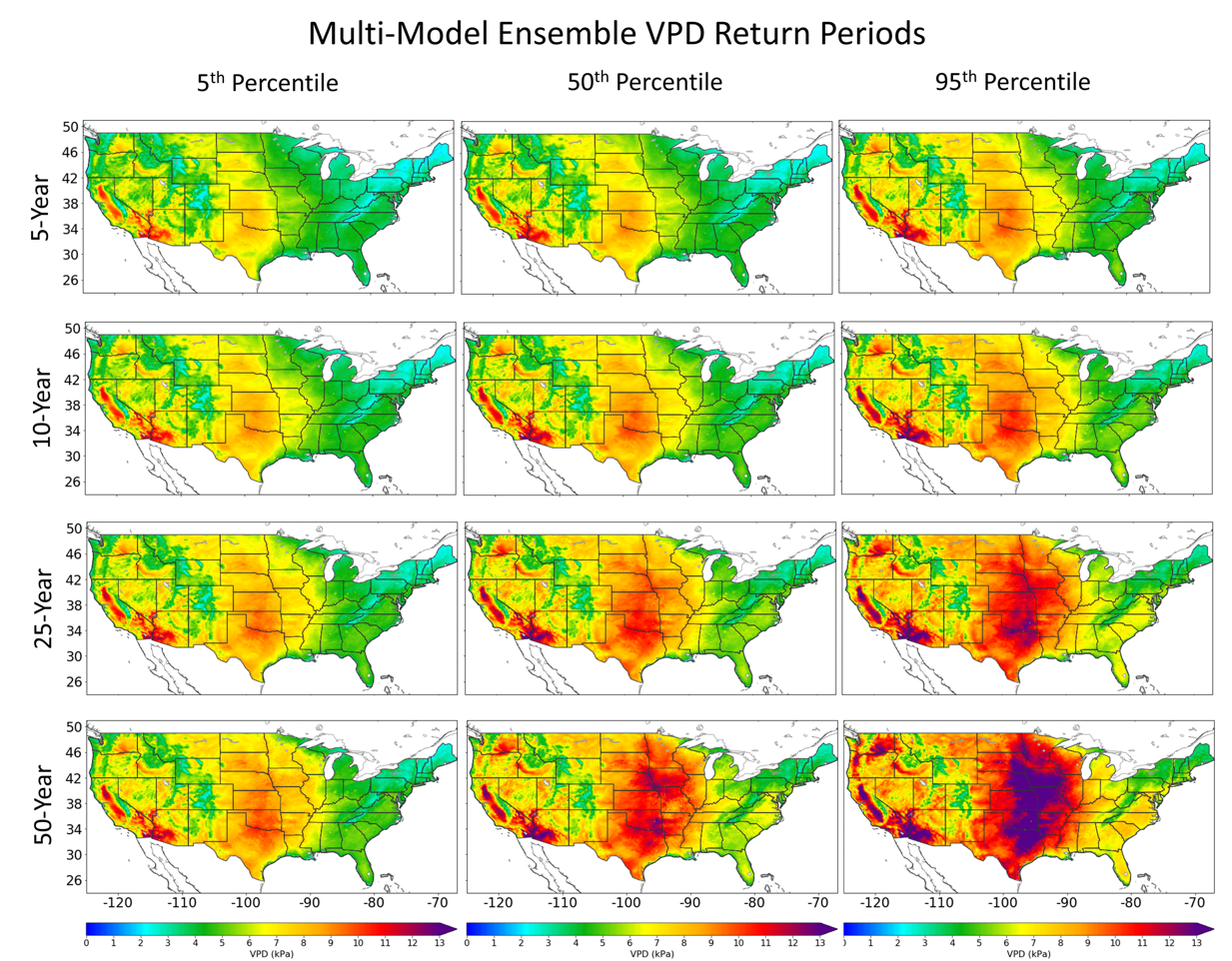Earth Science | Simulation
Projected U.S. Drought Extremes through the Twenty-First Century with Vapor Pressure Deficit

Global warming is expected to enhance drought extremes in the U.S. throughout the twenty-first century. Projecting these changes can be complex in regions with atmospheric and soil moisture that exhibit high variability on small spatial scales. Vapor pressure deficit (VPD) is a valuable measure of evaporative demand as moisture moves from the surface into the atmosphere and a dynamic measure of drought. In this project, Argonne researchers used VPD to identify short-term drought with the Standardized VPD Drought Index and to characterize future extreme, and they develop random sampling technique to quantify multimodel uncertainties.
Challenge
Because VPD is a valuable measure of evaporative demand as moisture moves from the surface into the atmosphere under warming conditions, and considering that saturation vapor pressure is driven by temperature, this will likely be a key metric for projecting future extremes and thus the focus of this work. In this project, researchers investigated the utility of VPD in detecting short-term droughts by calculating a drought index with VPD, and by assessing future VPD extremes by applying extreme value theory models to VPD.
Approach
Instead of using precipitation deficit to identify drought, leveraging ALCF supercomputing resources to run regional climate models, the researchers used the metric VPD, which is calculated based on a combination of temperature and relative humidity, and consists of the difference between how much water vapor the air can hold when saturated and the total amount of water vapor available.
Results
Results show the VPD-based index accurately identifies the timing and magnitude short-term droughts, and extreme VPD is increasing across the United States. By the end of the twenty-first century, the number of days VPD is above 9 kPa is projected to increase by 10 days along California’s coastline, 30 to 40 days in the northwest and Midwest, and 100 days in California’s Central Valley.
Impact
The projected worsening of droughts as a result of global warming is likely to have significant consequences in terms of crop loss, wildfires, and demand for water resources. This new predictive technique has the potential to help climatologists better understand phenomena induced by high temperatures and high evaporation rates, such as flash droughts, which as climatic events are marked by a quick onset period.